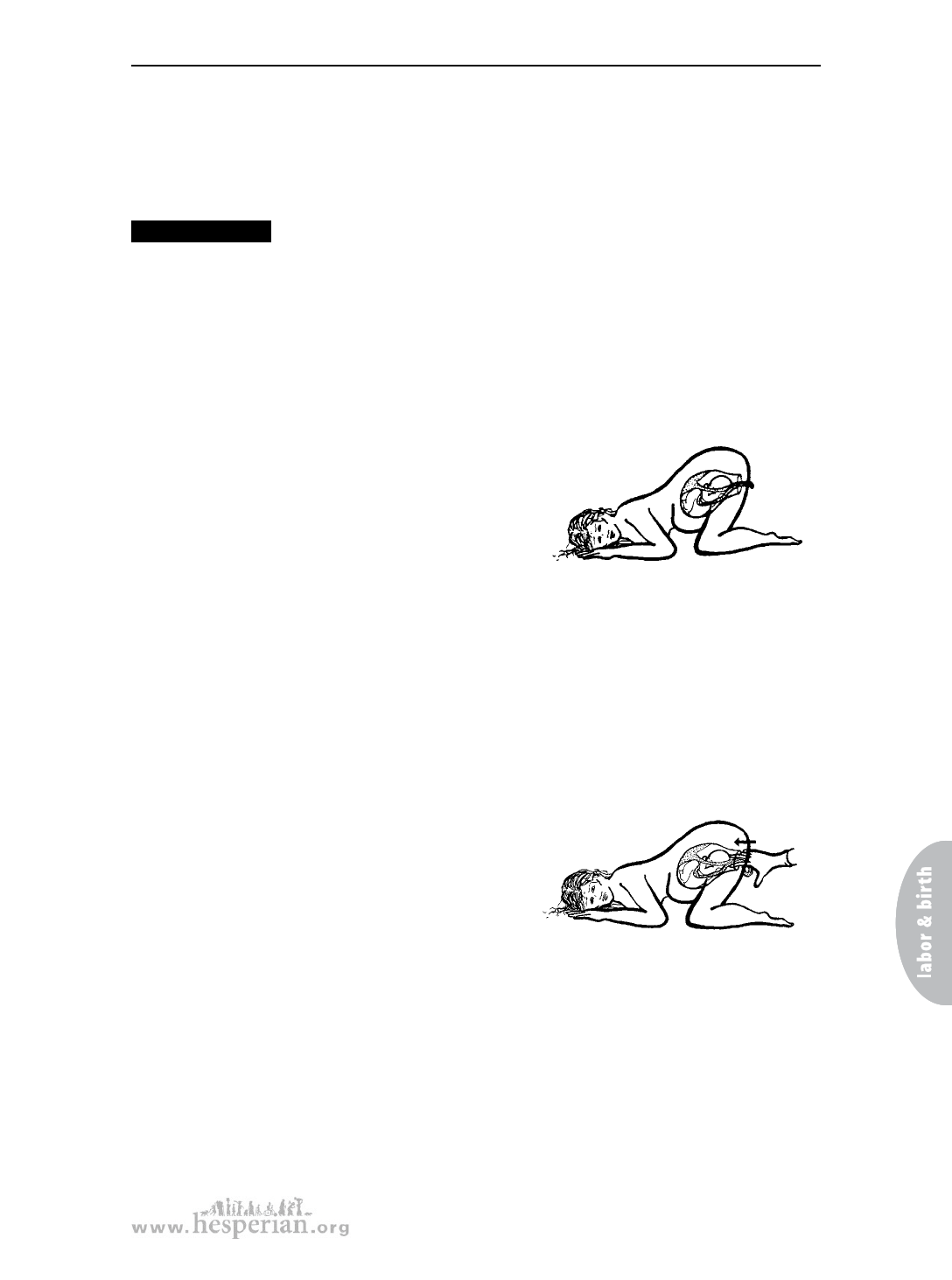
Signs for the midwife to check in stage 1
If the cord gets caught in front of the baby’s head, or on the side of his head, it
can be squeezed between the head and the mother’s bones. This makes it hard for
blood to get through the cord and bring oxygen to the baby. The baby can have
brain damage or die.
Wa r nin g s ig n s
• The cord comes out of the vagina.
• The baby’s heartbeat suddenly slows — especially right after the waters break
— and does not return to normal.
• The baby’s heartbeat gets very slow (fewer than 100 beats a minute)
during each contraction.
What to do
If the baby is alive, you must act fast. The best thing is
usually to keep the head off the cord and get the
mother to a hospital for a cesarean surgery
as soon as possible.
If you cannot see the cord, wash your hands well and put on very clean gloves.
Then feel inside the vagina for a cord in front of the baby’s head. Touch the cord
gently to feel for a pulse.
If you can see the cord coming out of the vagina, touch it gently to feel for a
pulse.
If the cord has a pulse, the baby may survive, but only if you get medical help
right away. The mother will need a cesarean to save the baby. While you travel,
put the mother in the knee-chest position with her hips up and hold the baby’s
head off the cord.
With a gloved hand, gently push the baby’s head up into the
mother’s body, away from the cord. Touch the cord as
little as possible, but if some of the cord is coming
out of the vagina, try to put it back in so it will
stay warm and wet (if you cannot get it back in,
wrap it in a clean cloth).
If medical help is many hours away and if the birth is going to happen very
soon, you may need to help the woman push the baby out as quickly as she can at
home. If the baby is born alive, he may need rescue breathing (see page 242).
If the cord has no pulse, the baby has already died. Stay at home to deliver
the baby.
177
A Book for Midwives (2010)